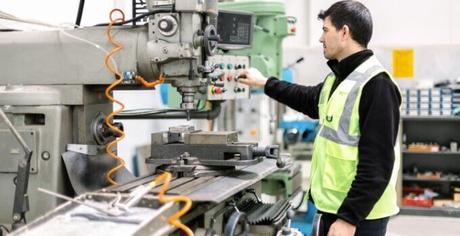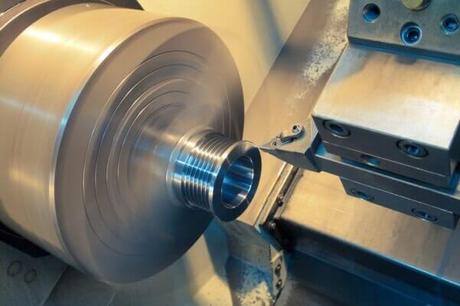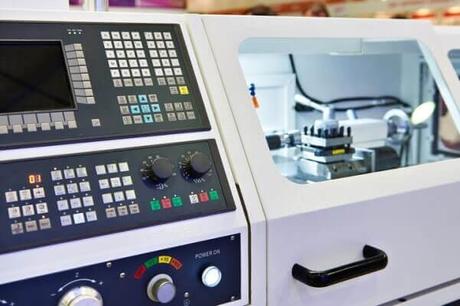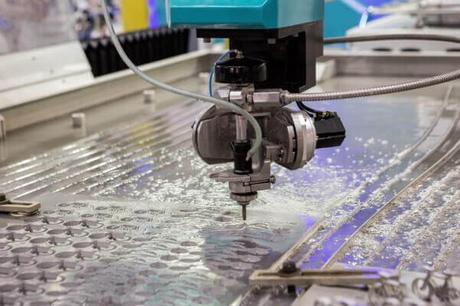
There’s a big world of machine tools out there, particularly high-end CNC machine tools.
It can be difficult to know which machine is the best choice to create a particular part.
Often, the same part can be created on more than one machine tool, so how does a skilled operator choose?
The two machines that cause the most confusion are CNC milling machines and CNC lathes.
Both machines act in very different ways in the machine shop. But someone without extensive machining experience might not be able to easily distinguish between them.
Four Key Differences Between CNC Milling And CNC Turning
1. Different rotations
Turning and milling are both machining techniques that use rotation to produce the power to cut a part.
But in CNC lathes, the workpiece itself turns while the cutting tool is stationary; CNC milling machines use a rotating tool to cut into a stationary part.

It’s a simple difference with a profound effect on everything from the geometries of parts that can be produced to the amount of power required to cut.
And while many parts can be cut on either machine, some workpieces will require either a lathe or a mill to produce.
2. Geometries
Traditionally, turning machines are used to produce cylindrical parts.
Lathes are the go-to choice for shafts, tapers, cones, and any other axially symmetric part.
You can create a cylinder on a lathe, but the process is far harder and requires a great deal more effort and planning (or programming, in the case of a CNC machine).
Rather than go through all the fuss, most machinists rely on a lathe to produce tubes and other cylinders.
The reverse is also true. Because a lathe rotates the part rather than the tool, it is best used for symmetrical cuts. Cutting a notch into a particular part of a wheel – such as is done to make a gear or cog.
3. Different orientations
A quick look at any modern machine tool manufacturer will show mills described as either horizontal or vertical milling machines. Horizontal mills tend to be designed for heavy-duty industrial applications, with a correspondingly large size.
Vertical mills tend to be smaller, lighter, and more versatile; perfect for everyone from hobbyists to shop professionals.
Lathes are predominantly sold in a horizontal orientation. There are vertical turning centers available on the market, but traditional lathes are horizontal.

With a mill, workpieces are fixed to the workbench and the cutting tool is lowered into them. But with lathes, workpieces are fixed in one of two ways.
Mounting a workpiece “between centers” refers to fixing the workpiece on the spidle between headstock and tailstock, giving two fixed points of support.
A lathe tailstock is typically equipped with bearings, allowing a workpiece to rotate freely while still being properly supported.
At other times, a workpiece can be mounted in a lathe from the headstock only.
By using a metal chuck, the operator can secure the workpiece to the lathe and enable a whole new range of operations to be undertaken, such as hollowing out the part to produce a threaded hole.
Mills offer a wide range of motion for the cutting tool but sacrifice a bit of stability. The difference is a slight one, but can be significant depending on the exact operation.
On the other hand, a vertical mill with three or four axes of movement can produce cuts without repositioning the workpiece that would be impossible on a lathe.
4. Different cutting processes
Because it’s the workpiece that rotates instead of the part, lathes can employ a variety of simple, effective cutting tools. Simply by varying the shape of the cutting head, lathe operators can produce a number of different finishes.

Many lathes are variable speed, allowing operators to take full advantage of the inherent stability of a workpiece between centers and use a higher or lower speed depending on the material and the intended finish.
Mills require a slightly different approach, with cutting tools that more closely resemble drill bits. These bits vary widely in both size and shape, with larger bits to remove more material.
Two Similarities Between CNC Milling And CNC Turning
1. A long history
Lathes were perhaps the first machine tools ever made, with primitive forms found as far back as the ancient Egyptians. Most of the earliest lathes didn’t rotate in a complete circle, but instead swung back and forth to produce a similar effect.
By the early modern period, lathes were commonly used in woodworking, and when the Industrial Revolution arrived, lathes were fitted with steam power to produce the first engine lathes for metalworking.
Mills came to the fore in the Industrial Revolution as well, part of an ever-expanding demand for iron and steel products in heavy industry.
2. A modern future
Both lathes and mills are on the cutting edge of modern manufacturing, with CNC technology commonly found on both. With CNC programming, lathes, mills, and other machine tools can undertake more advanced cuts than ever before, while also changing tools mid-operation. Both machine tools can perform a complicated series of cutting operations as part of one operation.
Walk into any major machine shop, and you’ll likely find both a CNC lathe and a CNC mill. Both are frequently used together with cylindrical shapes cut on the lathe and non-cylindrical cuts finished on the mill. Together, they form the bedrock of countless modern manufacturing facilities.
Peter Jacobs is the Senior Director of Marketing at CNC Masters. He is actively involved in manufacturing processes and regularly contributes his insights for various blogs in CNC machining, 3D printing, rapid tooling, injection molding, metal casting, and manufacturing in general.
